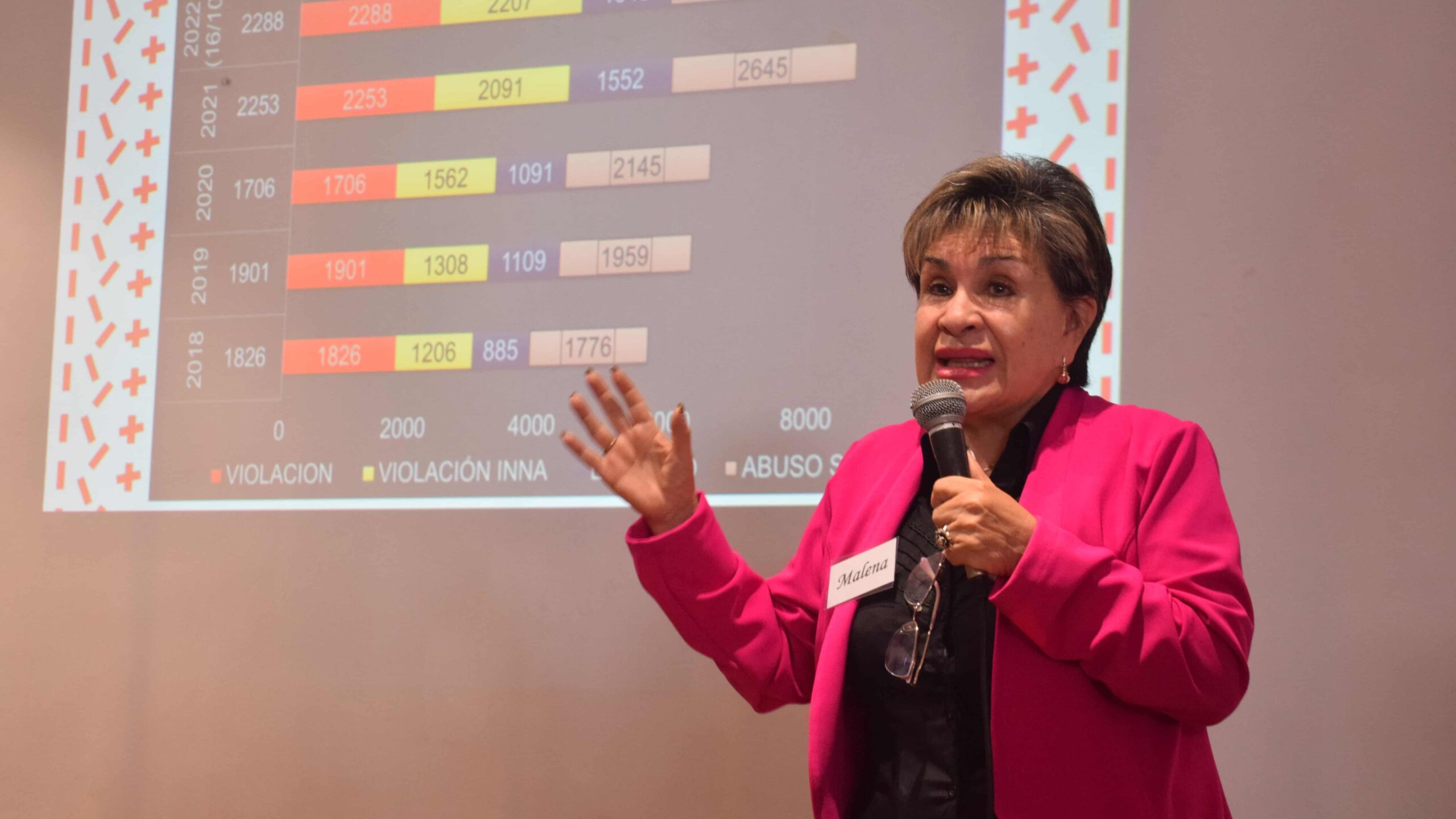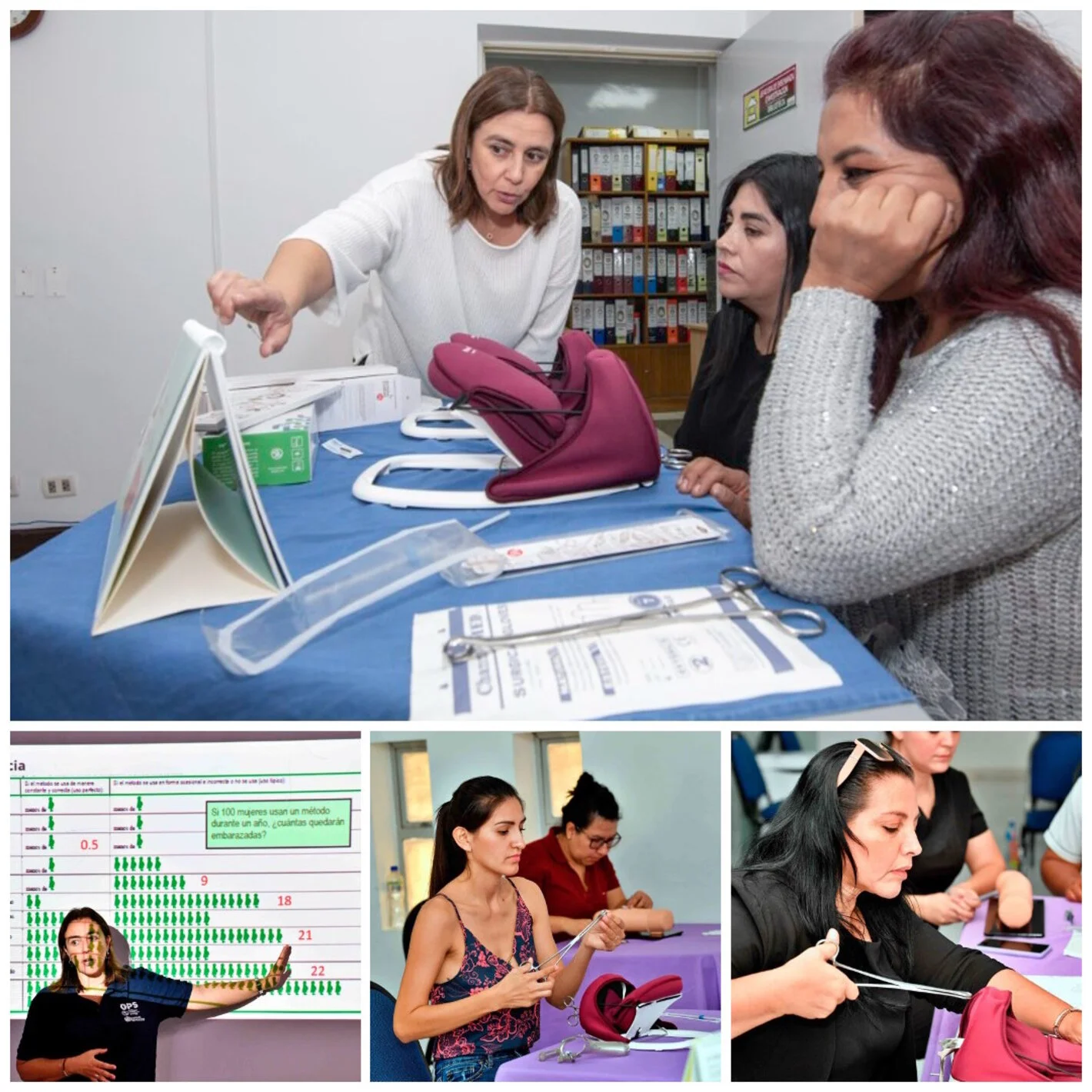The country, through the Ministry of Health and Sports (MSyD), in coordination with the Pan American Health Organization/World Health Organization (PAHO/WHO) and an official mission of the Latin American Center for Perinatology, Women’s Health, and Reproductive Health (CLAP/SMR), trained facilitators to promote the AIPEO strategy to expand and improve access to contraceptive methods after childbirth, cesarean section, or abortion. The AIPEO strategy is part of the policies to reduce maternal morbidity and mortality.
A group of health professionals from referral hospitals in Santa Cruz, Beni, Oruro, and La Paz were trained as facilitators of immediate post obstetric event contraception (AIPEO). AIPEO is one of the planned strategies that emphasizes the offer and placement of long-acting methods (LARC) before discharge. The training of facilitators is aimed at slowing maternal deaths in Bolivia.
CLAP/SMR’s International Sexual and Reproductive Health Consultant and one of the facilitators of the AIPEO strategy, Verónica Fiol, said that “family planning allows people to choose how many children they want to have and how often. And this is achieved through multiple interventions, such as comprehensive sexuality education and access to modern contraceptive methods.”
Fiol pointed out that “the AIPEO strategy benefits all women who so decide, but fundamentally the most vulnerable populations, such as the adolescent population, women over 35 years of age and those with chronic pathologies in which a second pregnancy can increase the risk of disease”.
Long-acting reversible contraceptive methods (LARC) provide long-acting, reversible contraception. They include intrauterine devices (IUDs) and subdermal implants.
Through simulation devices donated by CLAP/SMR PAHO/WHO, health personnel received training in the placement of IUDs and subdermal implants. Likewise, in Santa Cruz, in the 2nd level hospital of Villa 1 de Mayo, there was the possibility to practice on patients who recently gave birth and gave their informed consent.
The data
According to official figures from the National Health Information System – Epidemiological Surveillance (SNIS-VE) of the MSyD, until 2022, Bolivia recorded a decrease in teenage pregnancy cases in recent years. The figure for 2022 is 35,470 pregnant adolescents. In relation to fertility, it is estimated that, in 2023, women had an average of 2.5 children throughout their reproductive life. In the specific case of adolescent fertility, a 31% reduction is observed, if we compare the rate of 90.3 live births per 1000 women aged 15 to 19 years in 2000 with the figure of 62.3 in 2023.

This reduction is attributed to several things. First, the launch of the Unified Health System (SUS) in 2019, which increased adolescents’ access to insurance and all services. On the other hand, the Ministry of Education began to reaffirm its prevention policies.
Bolivia works on the prevention and promotion of long-acting contraceptive methods in health centers and under long-standing legal regulations.
Another relevant fact is that 98.1% of births in Bolivia are attended by trained personnel.
The maternal mortality ratio for 2020 was estimated at 160.9 per 100,000 live births, which represents a reduction of 43.3% with respect to the value estimated for 2000.
One of the strategies that the PAHO/WHO Country Office is strengthening the capacities of health personnel in the AIPEO strategy (immediate post obstetric event contraception), management of hemorrhage, sepsis and arterial hypertension, correct filling of the perinatal history, referral and counter-referral, among others.
This training of facilitators is part of the implementation of the Improving the Health of Women and Adolescents in Vulnerable Situations in Bolivia project, financed by Global Affairs Canada and executed by the Pan American Health Organization/World Health Organization (PAHO/WHO) Country Office, in coordination with national and local authorities.







